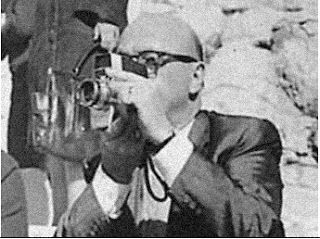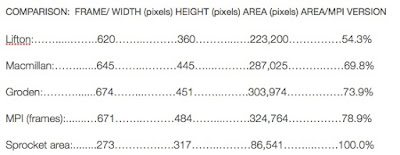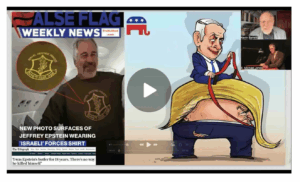by Jim Fetzer (with Mike Pincher)
At first consideration, the question sounds very odd on its face. How could Zapruder have not taken “the Zapruder film”? So here is some background. As many readers may be aware, I organized a JFK research group in 1992 of the most highly-qualified persons to ever study the case, including a world authority on the human brain, who was also an expert on wound ballistics; a Ph.D. in physics who was also an M.D. and board-qualified in radiation oncology; another M.D. who had been present in Trauma Room #1 when JFK was brought in for care and, two days later, was responsible for the treatment of his alleged assassin, Lee Harvey Oswald, in Trauma Room #2; a legendary photo-analyst, who had testified before the House Select Committee on Assassinations (HSCA) and later advised Oliver Stone on the production of “JFK”; and another Ph.D. in physics, this time with a specialization in electromagnetism, which includes the properties of light and of optics and images of moving objects.
We discovered that the autopsy X-rays had been altered to conceal a massive blow-out at the back of the head; that another person’s brain shown in diagrams and photographs at the National Archives had been substituted for that of JFK; and that the most famous footage in history, the Zapruder film, had been recreated by the removal of some frames and by the introduction of others, using the sophisticated techniques of optical printing and special effects applied to original footage to create a new film. I organized and moderated the first symposium on the authenticity of the film in Dallas in 1996 and would subsequently organize and moderate a conference on this subject in Duluth in 2003. (The conference is now available on YouTube in 66 segments, under the heading, “Zapruder Fakery”.) Later that year, I would publish my third collection of studies by experts on different aspects of the case, THE GREAT ZAPRUDER FILM HOAX (2003), one of the greatest photographic scams of history.
Which film is “the Zapruder film”?
This may sound like a lot to swallow, so I will break it down for accessibility. One of the first results of the Zapruder Film Conference was the discovery that the films currently available to the public, including David Lifton’s “Z Film” (undated), the Macmillan CD (1993), Robert Groden’s “The Assassination Films” (1995), and MPI’s “Image of an Assassination” (1998), differ significantly in the amount of information they provide. It we take the MPI version, which is the most complete, as the base of 100% (with a total of 411,305 pixels), the least complete is only about half of that:
These considerations suggest that the MPI version is the best available for research. Somewhat surprisingly, however, even MPI’s “Image of an Assassination” (1998) has frames missing and others out of order. MPI’s version does not include frames 155 and 156 or frames 208, 209, 210, and 211; it has reversed frames 331 and 332; and it is also missing (what ought to be) frames 341, 350, and even (the last frame) 486.
As it happens, John P. Costella, Ph.D., has produced a fresh, new version of the film, which overcomes all of these deficiencies and introduces improvements never before seen in any other version of the film, namely: corrections for pincushion and aspect ratio distortion; the inclusion of the so-called “ghost panels”; and masking of open sprocket holes to make information more accessible. In the interest of advancing the frontiers of knowledge, education, research, science and inquiry, this new, improved version is being made available to the public at no charge and is accessible at The New Zapruder Film Frames
Here is an example of frame 317 from Costella’s version, which is of special interest. When a frangible (or “exploding”) bullet entered his right temple, it not only set up shock waves that blew his brains out the back of his head but it also blew open a skull-flap on the right side of his head, which some have mistaken for the blow-out itself. As we shall see, they are not the same, nor should either of these genuine effects be confounded with the whitish “blob”, which, as Roderick Ryan, a Hollywood expert, explained to Noel Twyman, was painted in. (See “The JFK ‘Head Shot’ Paradox”.)
The Skull-Flap is Visible but the Blow-Out is Not in Frame 317
Notice, especially, that while a skull flap is extending from the right side of his head, which is also visible in the HSCA diagram and photograph below, like them, no blow-out to the back of his head is visible, even though it can be seen in frame 374 below. A stabilized real-time version is also available at assassinationscience.com toward the bottom of the home page. The frames and the stabilized version can be down-loaded for further study, where this is the best available version for serious research.
Was it Copyrightable?
The study of the film has been inhibited by the control that has been exercised over it by a private company and now by The 6th Floor Museum. A brief I commissioned by Mike Pincher, J.D., an attorney from California, was published as “The Zapruder Film: “No” to Copyright Protection”. He contends—with complete justification, in my opinion—that the film was never entitled to copyright from the start. There are two separate questions that have to be addressed. The first is that if the film is genuine as an accurate depiction of an historical event, is it entitled to copyright protection? The second is that if the film has been altered and is no longer an accurate film of an historical event, especially when it is marketed as genuine, does it deserve copyright protection? Interestingly, the answer to both questions seems to be the same, “No!” It appears obvious to me that this abuse of copyright has been deliberate to inhibit the serious study of the extant film, which has become an expensive proposition. In certain respects, the question of whether the film is properly subject to copyright is even more intriguing than whether a reworked film is deserving of such a protection.
Even if the film were judged to be authentic and complete, there are good reasons why it still should not be entitled to copyright protection. The predominant one is the 1990’s federal legislation popularly known as “The JFK Records Act” that was a direct countermand to the veil of secrecy pervading the subject matter (arguably already placing the film in the public domain), but also because of language in judicial case law. In 1998, the government purchased the film for $16,000,000, but did not also acquire its copyright. As Pincher argues in his study, while one 1968 federal district court case called it copyrightable, it is highly doubtful, based on subsequent case law, that even the Federal Second Appellate Circuit would agree. More significantly, it is doubtful that the U.S. Supreme Court would support it. Pincher contends—and I agree—that the film was never properly copyrightable to begin with, both because of its great public interest as a news event, and, no doubt more importantly, in that the assassination cannot be properly understood without public access to this source in toto. The idea of the event and its precise Z-film depiction cannot be properly treated separately. Even if the film were authentic, it would not deserve copyright protection.
And if the Film is Fake?
In considering the issue of copyright, a sharp line must be drawn between not only fiction and non-fiction, but between non-fiction and the recording of an historical event. There is no latitude of expression for the latter. Substantial similarity, as in the case of Oliver Stone’s “JFK”, has no bearing. An historical record per se is either accurate or not, has no creative value otherwise and cannot be tampered with. The Zapruder family and assignees have no entitlement of copyright protection relative to the extant film, when the film that came out of Zapruder’s camera and what we see in that film are two different depictions—and, indeed, depictions that are drastically different—and by design. The Kennedy assassination can only be accurately studied based upon the original film as a whole, with its expression appreciated as a whole uncompromised by change or alteration. Even individual frames are incapable of doing the occasion justice. Privilege only attaches to the real film seen as a whole in real time. Thus, no copyright protection can attend to the extant version of the film.
Those who study the individual frames or the stabilized version of the film archived atassassinationscience.com may notice a feature that they have probably not seen in earlier versions, in particular, the “ghost panels” that surround the sprocket holes These are double-exposures due to the design of the camera that was originally used by Zapruder to take the original film, which link one frame to another and cannot be duplicated. When those who were recreating the film had made the content changes they desired, then had to re-shoot most of its frames in a laboratory to recreate the ghost panels, in the absence of which the deception involved in its re-editing would have been immediately apparent. It is for this reason that the film as a whole had to be recreated, which makes the film as a whole a “fabrication”. That does not mean that none of it is real, but only that it takes a great deal of investigation and study to separate the authentic from the fake parts, as I am about to explain. But the answer to the intriguing question with which we began should be evident: Zapruder did not film the Zapruder film for the simple reason that no one took a film that was revised!
How we know it’s fake
The reason the article, “Who’s telling the truth: Clint Hill or the Zapruder film?”, is so very important, therefore, is that we now have new proof of its alteration from an unexpected source. Clint Hill, a Secret Service agent on the Kennedy detail, is, along with Jack and Jackie, the most conspicuous figure in the Zapruder film, where he is the only agent who responded in an attempt to protect Jackie. What Clint has to tell us about his actions at the time—which he has maintained for 47 years!—contradicts what we see in the film. Another agent on the opposite side of the limousine, John Ready, also started to respond when the first shots were fired, but was called back by Emory Roberts, Agent in Charge of the Secret Service Detail in Dallas. This makes Roberts one of the principal suspects in setting JFK up for the hit, where we have discovered more than 15 indications that that was the case. The other key players were the driver, William Greer, who, unbelievable as it may sound, actually pulled the limo to the left and to a complete halt to make sure that JFK would be killed, and Floyd Boring, the Assistant Agent in Charge of the White House Detail, who was not in Dealey Plaza, as Vincent Palamara has also explained in MURDER IN DEALEY PLAZA (2000).
That Clint Hill has been saying the same thing for 47 years might make this sound like “old news”. But the discovery that Clint had been saying this for so long only became apparent when John Costella viewed the video of what he had to say at a Warwicks bookstore, only this past December. John took a closer look and recognized that Clint had been saying the same thing, but that its importance for the authenticity of the Zapruder film had up until now gone unnoticed. Mike Pincher has also pointed out to me that, insofar as the film appears to have been recreated at a highly-classified photographic and film laboratory run by the CIA at Kodak Headquarters in Rochester, NY, the extant film appears to be a product of the government. Products of the government, which are financed at taxpayer expense, however, like other government documents, studies, and reports, do not qualify for copyright protection. Ironically, the discovery that the film has been faked also nullifies any arrangements that even the government itself has made regarding its copyright protection. There thus appear to be a variety of grounds for denying copyright to the extant film, which Mike Pincher has explained.
Resistance to Zapruder fakery
Among those in the JFK research community who have been the most outspoken in opposition to Zapruder film fakery are Robert Groden and Josiah Thompson. Robert Groden has a vast collection of JFK memorabilia, including what appears to be an early copy of the film. Josiah Thompson published his book SIX SECONDS IN DALLAS (1967), based upon the study of the film to which he had access through a special arrangement with LIFE magazine. In my opinion, they both have serious conflicts of interest in being objective about the proof we have adduced, since the value of Groden’s collection and the significance of Thompson’s book would be seriously compromised were the fabrication of the film to become widely accepted by the public. The arguments that they have given for its authenticity, moreover, have not withstood critical scrutiny. Josiah, for example, has argued that it would have been impossible to fake the film because of an unbroken chain of custody from Dallas to LIFE magazine and after, a claim that was recently dismantled by the Assassination Records Review Board (ARRB), a civilian panel created by the JFK Records Act.
Its former senior analyst for military affairs, Douglas Horne, has now published INSIDE THE ARRB (2009), in which he traces the discoveries that occurred during its years of operation in declassifying more than sixty thousand documents and records that had been withheld from the public by the CIA, the FBI, the Secret Service and other government agencies. Among those discoveries was that one version of the Zapruder film was brought to the National Photographic Interpretation Center (NPIC) in Washington, D.C., on Saturday, 23 November 1963, and another on Sunday, 24 November 1963. The first was an 8mm film that had been developed in Dallas. The second was a 16mm film that had been developed in Rochester. There were five physical properties of the strips of celluloid which distinguished them, as I have explained in “US Government Official: JFK Cover-Up, Film Fabrication”. So the chain of custody argument, which Thompson, especially, has championed, has no merit.
In addition, we have discovered a great many changes in the content of the extant version of the film from what it should have shown, based upon studies of the medical evidence, the physical evidence, and the reports of a large number of eyewitnesses in Dealey Plaza, none of whom, interestingly, reported observing the dramatic, back-and-to-the-left motion of JFK’s body that is so striking in the film. Clint also describes peering into a hole in the back of JFK’s head, a gaping, fist-sized blow-out, which by itself contradicts the official X-rays, some of the autopsy photographs and diagrams, and early frames of the Zapruder film, where, as a new group of Hollywood experts has found, it was (crudely) painted over in black. Some years ago, on the hunch that the conspirators who were redoing the film might have spent so much time concentrating on those early frames, especially 313-317, that they could have overlooked the wound in later frames, I made a search and found that it is clearly visible in frame 374, as I emphasized in HOAX. So the simplest proof that the film has been altered is that the head wound is visible in some frames but has been concealed in others, which is something that you can confirm for yourself.
Algorithmic Proofs of Fakery
Here is how you can prove for yourself that what I am telling you is true. Go to the article, “Who’s telling the truth: Clint Hill or the Zapruder film?”, then do as follows:
(1) Scroll down to frame 374, where you can see the blow out in his head;
(2) Compare that with the HSCA photo and diagram, the next image in line;
(3) Do you observe that the skull flap is present but the blow-out is not?
(4) Scroll down to the witnesses reporting the location of the blow-out;
(5) Do you see that it corresponds with the blow out seen in frame 374?
(6) Scroll down to the X-ray on the left and “Area P” defined on the right.
(7) Do you see where “Area P” closely resembles the blow-out in frame 374?
(8) Do you see where “Area P” is unusually bright in the X-ray on the left?
(9) Scroll down to the diagrams of the head wound by Charles Crenshaw, M.D.
(10) Do you see how his diagram agrees with frame 374 and X-ray “Area P”?
(11) Go to the Zapruder film as individual frames or in its stabilized version.
(12) Compare what you see in frames 313-317 with what you see in frame 374.
Since the blow out is visible in frame 374 but not in earlier frames, such as 313-317, what does that tell you? Hollywood experts have determined it (the blow out) was painted over in black in those early frames, which means that the film has been altered. The limo stop was also taken out, where we have around 60 witnesses who reported seeing it dramatically slow or come to a complete stop. But the car had to slow dramatically as it came to a complete stop. Notice in the section entitled, “The Limo Stop”, I quote witnesses—Toni Foster, Billy Lovelady, Roy Truly, and Mrs. Earle Cabell—who report seeing the limo stop with their own eyes. Is there anything you question about what they are reporting? But if the limo came to a stop—and all four of the motorcycle patrolmen said the same thing—since the stop is not in the film, what happened to it? Did it simply disappear? Or did it have to be removed when the film was reworked, because it was an obvious indication of Secret Service complicity in setting JFK up for the hit? Which is the principal reason the Zapruder film had to be faked, the ramifications of which clearly extend far beyond recreation of the film.
The Commission’s Dereliction
Indeed, there are more than 15 indications of Secret Service complicity in setting him up for the hit, including leaving two Secret Service agents (who would have been with the limo) at Love Field, placing the vehicles in the wrong order (with the President’s limo first, when it should have been preceded by those of the Mayor of Dallas and of the Vice President), removing the flat-bed truck that should have accompanied the President’s vehicle to provide for press and television coverage), not welding down the manhole covers, not covering the open windows, ordering the 112th Intelligence Unit to “stand down”, allowing the crowd to spill out into the street, taking a turn of more than 90°, changing the motorcade route three days before the event, reducing the motorcycle escort to four and directing them not to ride forward the rear wheels, not responding after bullets began to be fired, pulling the limo to the left and a stop to make sure JFK would be killed, getting bucket and sponge to wash the brains and blood off the limo at Parkland Hospital before he had even been pronounced dead; and more that involve the autopsy X-rays and photos, which suggests the direction in which responsibility lies for the assassination of JFK.
Greer’s bringing the limo to a halt and Kellerman’s silence and inaction over blatant violations of protocol for which he was responsible confirms both of their roles among the crucial conspirators. Moreover, whether someone personally finds Hill credible or not does not detract from impugning the integrity of the Warren Commission itself. Clint Hill’s account so severely contradicts the Zapruder film that the commission had a duty to inquire of him, which it failed to do. Thus, neither the accuracy of the film nor the integrity of the Secret Service appear to have been of the least concern to the commission, which was operating—with tacit or overt complicity of the FBI and its own staff—to substantiate the predetermined conclusion that Oswald was “the lone gunman” regardless of truth. His testimony is sufficient, at the least, to either establish that the film wasn’t what it was presented to be (which eliminates it as authoritative evidence for assassination research) or that he, as a member of the president’s protective detail, was lying and should have been removed as an agent or criminally prosecuted or both. The corruption of the Warren Commission becomes all the more glaring from these reflections on what it did not do as well as what it did.
Mike Pincher, J.D., of Palmdale, CA, currently practices as a trial attorney in the Los Angeles area, graduated from SUNY Albany and earned his Doctor of Jurisprudence at San Fernando Valley (now LaVerne) College of Law.
Jim Fetzer, a former Marine Corps officer who earned his Ph.D. in the history and the philosophy of science, is McKnight Professor Emeritus at the Duluth campus of the University of Minnesota. He co-edits assassinationresearch.com with John P. Costella, Ph.D. His latest–and 29th–book is The Place of Probability in Science. [NOTE: This is one in a series of articles being republished since veterans today.com deleted them in a dispute with its Senior Editor, Gordon Duff, about which I have since written several articles.]
Please follow and like us:










Dubai Escorts
Indian Escorts in Dubai
Pakistani Escorts in Dubai
Call Girls in Dubai
Malaysia Escorts
VIP Dubai Escorts